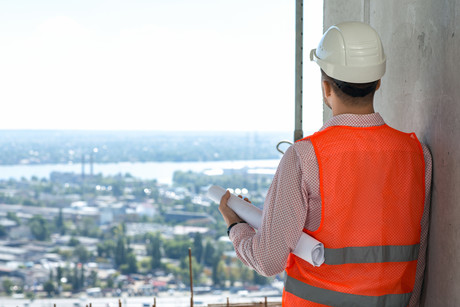Australia's buildings must be ready for a zero carbon future

Energy standards in Australia’s National Construction Code must be upgraded if new buildings are to be fit for a zero carbon future, according to a new report released by the Australian Sustainable Built Environment Council (ASBEC) and ClimateWorks Australia.
‘Built to Perform’ presents the results of the Building Code Energy Performance Trajectory project, which quantifies the opportunities of establishing a clear, consistent and ambitious long-term plan for the energy requirements in the National Construction Code. The report modelled eight different building types across four climate zones, investigating the costs and benefits to society of simple energy efficiency and on-site renewable energy opportunities.
“All of the buildings being built today will still be operating in 2050, at a time when we will need to be at or near net zero emissions,” said ASBEC Executive Director Suzanne Toumbourou. “Our Building Code needs to be ‘zero carbon ready’, ensuring that today’s new builds are prepared to operate in a zero carbon future.”
The report finds that Australia need stronger targets and regulations to deliver energy bill savings, reduce stress on the grid and deliver cost-effective emissions reductions. It shows that setting stronger energy standards for new buildings in the Code could, between now and 2050, reduce energy bills by up to $27 billion, cut energy network costs by up to $7 billion and deliver at least 78 million tonnes of cumulative emissions savings.
“We welcome proposed improvements to the 2019 National Construction Code to advance energy performance in commercial buildings and adjust the requirements for residential buildings,” Toumbourou said. “However, to meet the full potential of the Code, we need to shift away from ad hoc, periodic updates. Governments must agree to a longer-term plan with targets and a clear, regulated and transparent process for Code updates out to 2030, starting with a step-change in residential standards in 2022.”
“If developers and manufacturers know how the Code requirements will evolve over the next 15 years, this will provide the regulatory certainty industry needs to plan and invest in new technologies, delivering higher building energy performance at lower cost,” said Professor Tony Arnel, Chair of ASBEC’s Building Code Task Group and President of the Energy Efficiency Council.
Energy Efficiency Council CEO Luke Menzel added that the report shows Australia can’t afford not to act, noting, “In the wake of last week’s news from ACEEE that Australia is last in the developed world on energy efficiency policy and performance, this is tangible action that government can take now to turn that ranking around, and put downward pressure on energy bills around the country.”
According to ClimateWorks Project Manager Michael Li, the report’s analysis shows that improvements in Code energy requirements could reduce energy consumption of new buildings by up to 56% by 2030.
“This could be achieved through simple, cost-effective energy efficiency measures such as improved air tightness, double-glazed windows, increased insulation, outdoor shading and more efficient air conditioners, hot water systems and lighting,” said Li. “With the costs of solar PV and battery storage rapidly reducing, adding on-site renewable energy into the Code could deliver significant additional gains.
“Delaying action will mean that many of these opportunities are lost. A three-year delay in further upgrades to building energy performance standards could lead to a further $2.6 billion in wasted energy expenditure and lock in an additional 9 million tonnes of emissions by 2030, increasing to 22 million tonnes by 2050.”
The report comes just a few days after the launch of the Green Building Council of Australia’s carbon-positive roadmap for the built environment, establishing the steps required for commercial, institutional and government buildings and fit-outs to achieve net zero emissions by 2050.
Berrima Cement Works upgrades with sustainable tech
Boral has unveiled new carbon-reducing technology at the site, which supplies 40% of cement in...
Australian orgs partner to speed circular economy
GS1 Australia has joined forces with the Product Stewardship Centre of Excellence to drive the...
Victorian utility recognised at Asian Water Awards
South East Water won two awards for its Hydrotrak Geofencing technology, which has helped it to...









